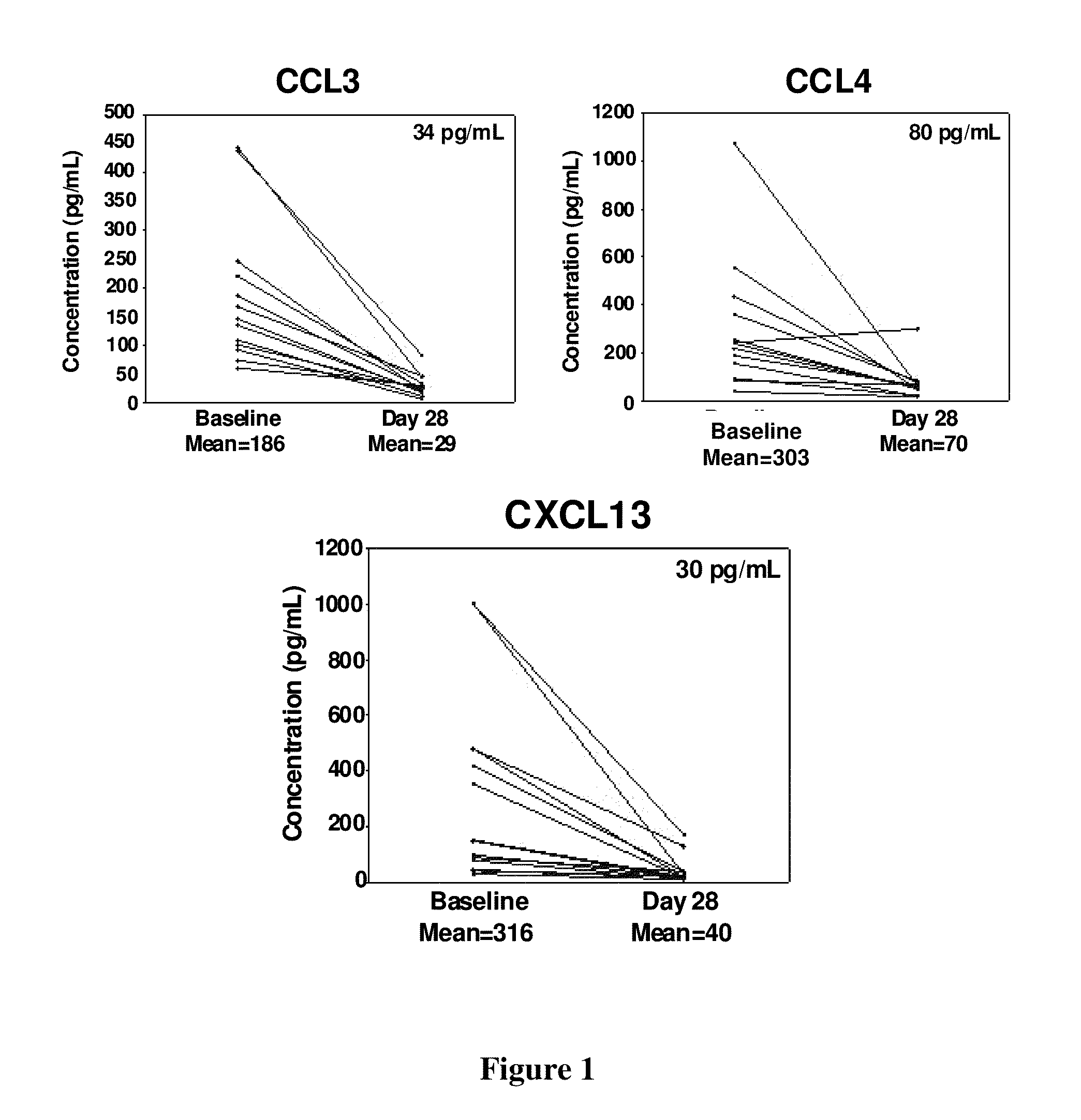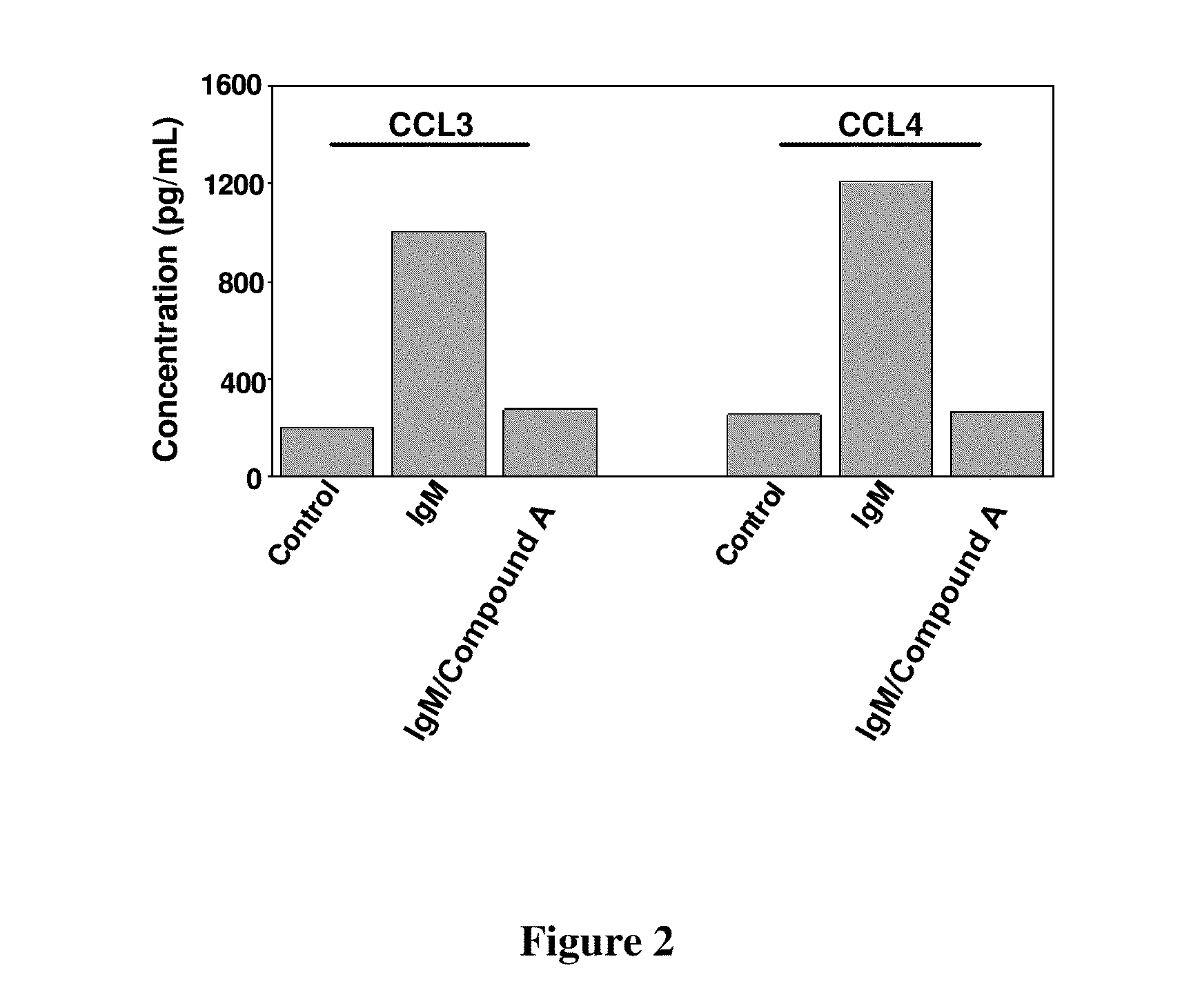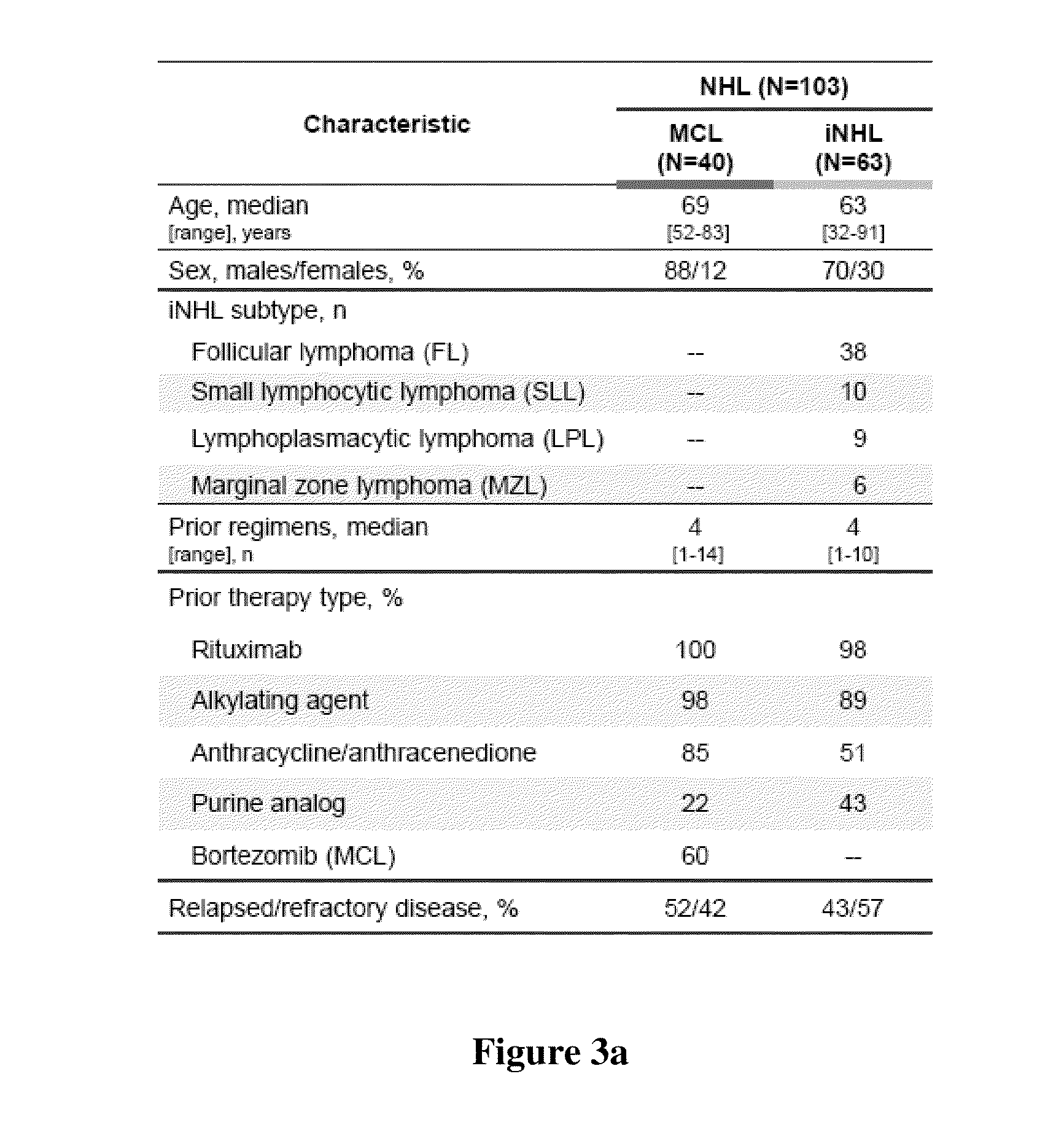Methods of treating hematological disorders with quinazolinone compounds in selected subjects
a quinazolinone compound and hematological disorder technology, applied in the direction of biocide, drug composition, extracellular fluid disorder, etc., can solve the problem of relativly rapid fatal outcome, and achieve the effect of increasing chemokine levels, progressing more quickly, and increasing chemokine levels
- Summary
- Abstract
- Description
- Claims
- Application Information
AI Technical Summary
Benefits of technology
Problems solved by technology
Method used
Image
Examples
example 1
CCL3, CCL4 and CXCL13 Levels in CLL Patients Reduced After Treatment
[0159]This example provides support of Compound A reducing elevated chemokine levels in CLL patients.
[0160]Plasma samples with EDTA were collected at baseline (pre dose) and on the last day of cycle 1 (day 28) after dosing with Compound A. Samples were centrifuged at 1,100×g (relative centrifugal force) for 10 minutes at 4 degrees centigrade for separation of plasma and mononuclear cell layers. Plasma was stored at −70 degrees centigrade. Before analysis, samples were thawed overnight at 4 degrees centigrade and centrifuged at 1,500×g to remove debris. Chemokines were analyzed with commercially available multiplexed bead suspension arrays (MBA, Millipore). MBAs were analyzed using a Luminex 200 instrument and data was organized and analyzed using 3.1 xPONENT software.
[0161]The plasma concentration of 14 patients with CLL was assessed at pre-dose baseline concentrations. The average plasma concentration of CCL3 (186 ...
example 2
Compound A Blocks BCR-Induced Secretion of Chemokines CCL3 and CCL4 by CLL Cells
[0163]This example demonstrates that 2-(1-(9H-purin-6-ylamino)propyl)-5-fluoro-3-phenylquinazolin-4(3H)-one is effective in reducing the amount of chemokine CCL3 and CCL4 in BCR-stimulated CLL cells.
[0164]Method: CLL cells were cultured in medium (control), medium supplemented with anti-IgM or medium supplemented with anti-IgM plus Compound A. After 24 hours, supernatants were harvested and assayed by enzyme-linked immunosorbent assay and the chemokine levels compared.
[0165]The bar diagram of FIG. 2 displays concentration of chemokine levels from CLL cells cultured in the three different conditions. Concentration of CCL3 and CCL4 were increased roughly 5 to 6 fold in the presence of anti IgM as compared to the control. Presence of Compound A, however, resulted in the effective suppression of chemokine secretion to levels nearing the control values.
example 3
Selectivity of Compound I for p110δ
[0166]This example demonstrates that Compound A is selective for p110δ as measured in isoform specific cell-based assays.
[0167]Swiss-3T3 fibroblasts and RAW-264 were seeded on a 96-well tissue culture plate and allowed to reach at least 90% confluency. Cells were starved and treated with either vehicle or serial dilutions of Compound A for 2 hrs and stimulated with PDGF or C5a respectively. Akt phosphorylation and total AKT was detected by ELISA. Purified B-cells were treated with either vehicle or serial dilutions of compound I for 30 minutes at room temperature before the addition of purified goat anti-human IgM. Results are expressed as relative [3H] thymidine incorporation induced by IgM crosslinking.
TABLE 2PI3KalphaPI3KδPI3KγEC50 (nM)EC50 (nM)EC50 (nM)Fibroblast Cell LinePrimary B CellMonocyte Cell LinePDGF induced pAKTBCR mediatedC5a induced pAKTproliferaton>20,00063,894(n = 12)(n = 6)(n = 11)
PUM
| Property | Measurement | Unit |
|---|---|---|
| concentration | aaaaa | aaaaa |
| concentration | aaaaa | aaaaa |
| concentration | aaaaa | aaaaa |
Abstract
Description
Claims
Application Information
 Login to View More
Login to View More - R&D
- Intellectual Property
- Life Sciences
- Materials
- Tech Scout
- Unparalleled Data Quality
- Higher Quality Content
- 60% Fewer Hallucinations
Browse by: Latest US Patents, China's latest patents, Technical Efficacy Thesaurus, Application Domain, Technology Topic, Popular Technical Reports.
© 2025 PatSnap. All rights reserved.Legal|Privacy policy|Modern Slavery Act Transparency Statement|Sitemap|About US| Contact US: help@patsnap.com



